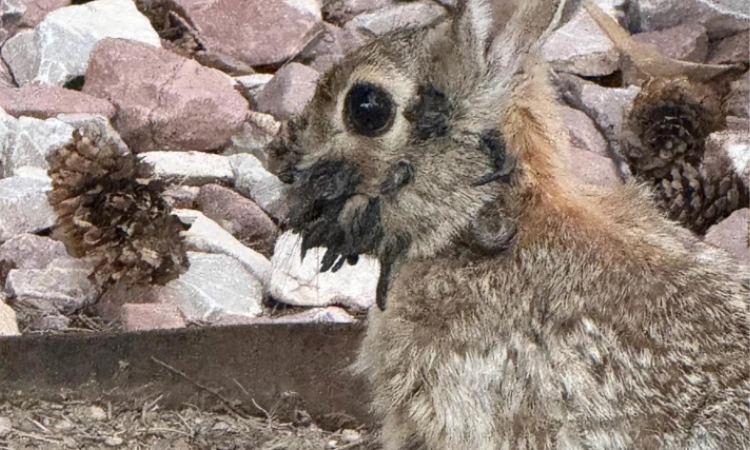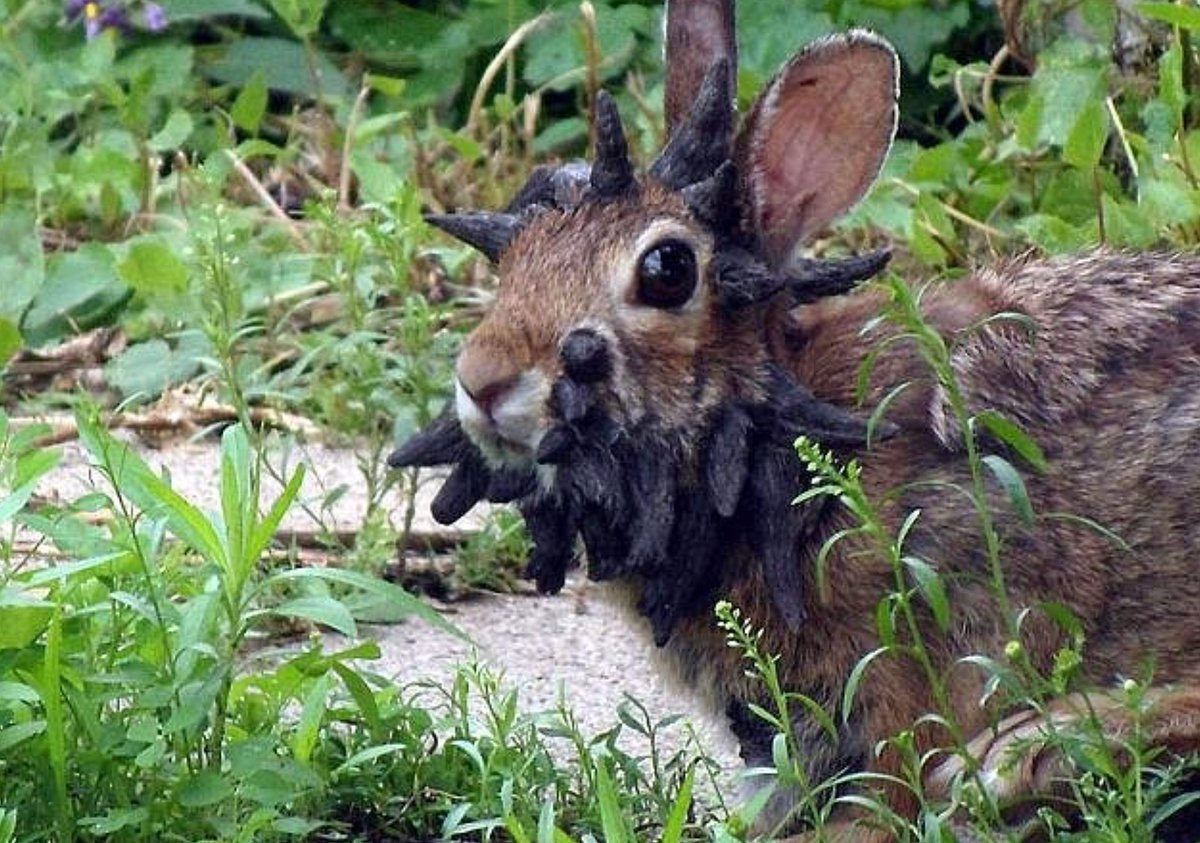The increasing appearance of wild rabbits with strange, horn-like tumors on their heads in Colorado parks is shocking the American public, with photos of these "demon rabbits" spreading rapidly on social media.
Some say it's the most frightening animal-related sight they've ever seen. "It's like something out of a nightmare. I would freak out if I saw them," one social media user commented.
US media reports that many locals and farmers are overly concerned about the impact and severity of the "horned" rabbit situation.
According to the Colorado Parks and Wildlife (CPW), these rabbits are infected with the Shope papillomavirus (CRPV). This virus causes benign tumors on wild rabbits, mainly on their faces, which gradually develop into strange shapes like horns or tentacles.
However, this is not a new virus. Images of animals infected with this virus have been described in long-standing legends in America. According to AP, it may be the origin of the centuries-old North American legend of the Jackalope (a portmanteau of "jackrabbit" and "antelope"), a rabbit with antelope-like antlers.
 |
A rabbit infected with CRPV in Colorado. Photo: 9News |
This legend is very popular in North America, especially in the American West. According to folklore, the Jackalope can sing, mimic human voices, and often sits with cowboys as they gather around the fire at night. Its image is printed on shirts, mugs, and signs as a popular symbol.
The Wyoming State Legislature considered a bill three times, in 2005, 2013, and 2015, to recognize the Jackalope as the state's official mythical creature, but the bill was rejected each time in the Senate.
In 1930, Professor Richard E. Shope at Rockefeller University became the first person to discover the CRPV virus that causes rabbits to grow horns in the Midwest. The virus was subsequently named after Professor Shope.
According to research, the tumors caused by CRPV on rabbits are not harmful. The rabbit's immune system can fight the virus, so these tumors often disappear on their own. However, there have been cases where tumors grow on the eyes or mouth, hindering eating and drinking, causing the rabbit to lose weight or starve.
 |
A rabbit infected with CRPV in Iowa, USA. Photo: X/Data |
According to scientists, this virus is transmitted from rabbit to rabbit through bites caused by insects like mosquitoes, ticks, and fleas. CRPV can also be transmitted through food, water, and blood transfusions, although the chance of infection is lower.
US officials say CRPV does not spread to humans or other pets, although it can spread to domestic rabbits. Colorado authorities have advised people to stay away from and not touch infected rabbits to avoid unnecessary risks.
In fact, the discovery and study of CRPV is considered to have laid the foundation for research on the link between viruses and cancer, such as the HPV virus and cervical cancer.
Researchers at the Frederick National Laboratory for Cancer Research and the Penn State Cancer Institute recently deciphered the complete map of active viral RNAs, clarifying how CRPV RNA regulates the turning on and off of genes in host cells, helping the virus replicate and regulate cell function.
Duc Trung (According to AP, Washington Post)












